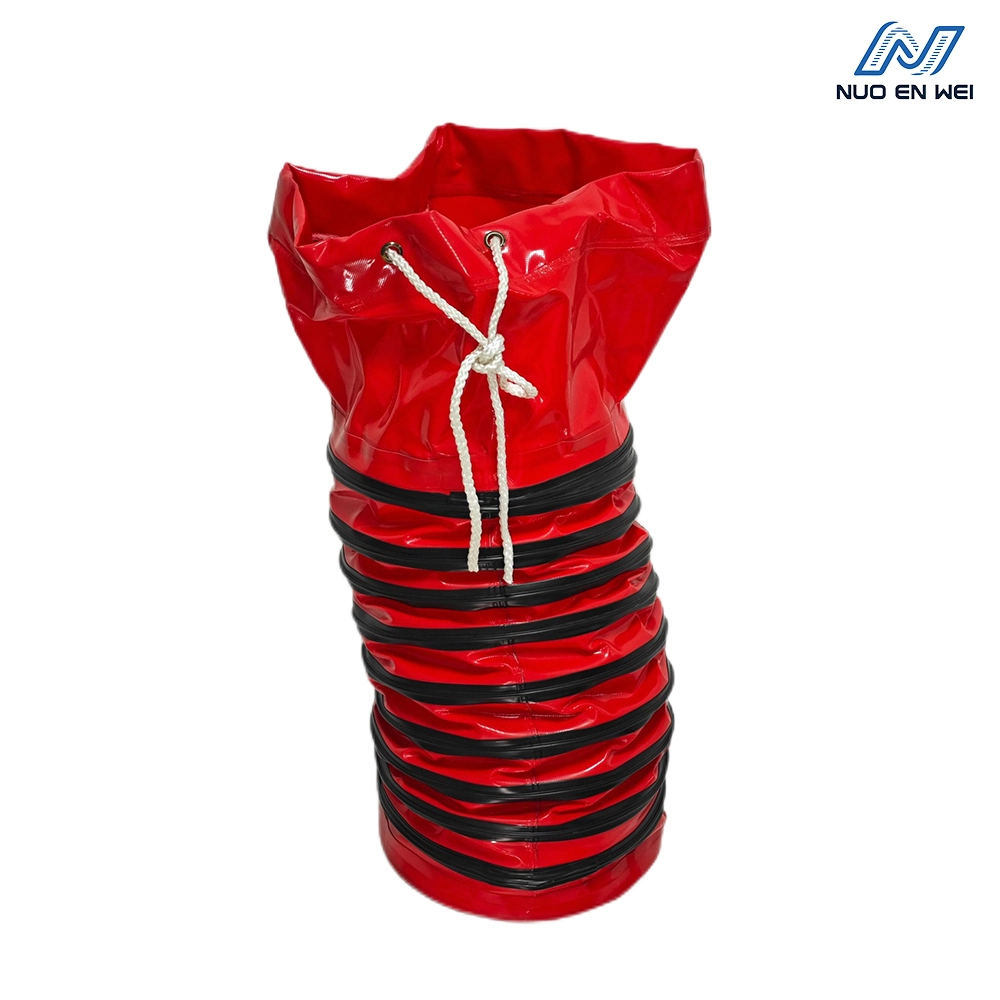PVC Flexible Ducting | Fire-Resistant, Lightweight HVAC Ducting | NUOENWEI
Our PVC flexible ducting is designed for demanding environments, offering fire-resistant and chemical-resistant properties. Perfect for HVAC systems, industrial ventilation, and dust extraction applications, this ducting ensures high airflow efficiency with a lightweight, flexible design."
Technical Specifications of Fire-Resistant PVC Ducting
-
Material: PVC-coated polyester
-
Temperature Range: -15°C to +80°C
-
Diameter: 4-inch to 59-inch
-
Certification: ISO9001
Where to Use PVC Flexible Ducting?
-
HVAC air ducts in commercial buildings.
-
Industrial fume extraction systems (e.g., welding, chemical labs).
-
Dust collection in woodworking workshops.
-
Ventilation for agricultural facilities.
PVC Flexible Ducting
PVC Flexible Ducting Product Description
PVC Flexible Ducting is a lightweight, corrosion-resistant ventilation solution designed for efficient air flow management. Made from durable polyvinyl chloride (PVC), it combines exceptional flexibility with high strength, allowing easy installation in tight spaces and irregular layouts. Ideal for industrial exhaust, HVAC systems, agricultural ventilation, and marine applications, it withstands harsh chemicals, extreme temperatures (-10°C to +80°C), and UV exposure. t offers a cost-effective, long-lasting alternative to rigid metal ducts.
Related Parameters
Technical Specifications: Industrial PVC Flexible Ducting
| Property | Detail |
| Material | PVC + Polyester Reinforcement |
| Temperature Range | -15°C to +80°C |
| Thickness | 0.38mm-0.6mm |
| Certifications | ISO9001 |
Product Advantages
1. Superior Flexibility and Durability
- **Highly flexible design**: can be easily bent and twisted to adapt to complex installation environments (e.g. narrow spaces, irregular piping layouts), reducing the use of joints and minimizing the risk of leakage.
- **Pressure and tensile resistance**: special PVC material enhances the ability to resist mechanical stress, and is not easy to be deformed or ruptured in long-term use.
2. Chemical corrosion resistance and weather resistance.
- **Wide range of compatibility**: Excellent resistance to acids, alkalis, oils and most chemicals, suitable for harsh environments such as industrial exhaust and laboratory exhaust.
- **Temperature Adaptability**: Wide range of operating temperatures (e.g. -15°C to +80°C), some models can withstand higher and lower temperatures to adapt to different climatic conditions.
3. Lightweight and easy to install
- **Lightweight**: Compared with metal ducts, PVC material significantly reduces transportation and installation costs and reduces structural loads.
- **Quick Installation**: No specialized tools are required, and standard fittings can be cut, folded or directly connected to shorten construction time.
4. Low resistance, high efficiency and airtightness
- **Smooth inner wall**: reduces air flow resistance, improves ventilation efficiency and reduces energy consumption.
- **Strong airtightness**: One-piece molding process or sealing ring design effectively prevents gas leakage and guarantees system stability.
5. Economy and long life
- **Low cost maintenance**: anti-aging, UV protection (optional UV protective layer), long-term use without frequent replacement.
- **High cost performance**: Comprehensive procurement, installation and maintenance costs are significantly lower than metal or fiberglass ducts.
6. Environmental protection and safety
- **Non-toxicity certification**: Comply with RoHS, REACH and other environmental standards, and some of the products have passed food-grade or medical-grade certification.
- **Flame-retardant performance**: optional flame-retardant formulations (e.g. V0 grade) are available to meet fire and industrial safety requirements.
7. Multifunctional application scenarios
- **Wide range of application areas**: industrial ventilation (dust and smoke emission), agricultural greenhouses, building air-conditioning, marine equipment, household ventilation systems, etc.
- **Customization options**: support customized diameter, length, color and additional features (e.g. anti-static coating) as required.
Summary:
With its flexibility, corrosion resistance, lightweight design and cost-effectiveness, PVC flexible ducts are the ideal solution to replace traditional rigid ducts, especially suitable for dynamic environments or ventilation scenarios that require frequent adjustments.
Application Scenario
PVC Flexible Ducting Application Scenarios
Due to its light weight, corrosion resistance and high adaptability, PVC flexible ducting is widely used in the following fields to meet diversified ventilation needs:
1. Industrial ventilation and exhaust gas treatment
Factory workshop: conveying industrial exhaust gas containing dust, smoke or chemical gases (e.g. welding fume, spraying particles), acid and alkali corrosion resistant, prolonging service life.
Mechanical equipment heat dissipation: connecting fans, air compressors and other equipment, quickly discharging high-temperature gases to avoid overheating failure.
Dust-free workshop: with filtration system, used for clean room air circulation, reduce particle pollution.
2. Agriculture and greenhouse ventilation
Greenhouse greenhouse: evenly distribute warm or cold air, regulate temperature and humidity, and promote crop growth.
Livestock farms: discharging ammonia and moisture, improving air quality and preventing respiratory diseases in animals.
Grain storage: anti-static models can safely deliver dry air and prevent the risk of dust explosion.
3. Building Heating, Ventilation and Air Conditioning (HVAC)
Commercial buildings: connecting to central air conditioning system, flexible arrangement of air supply ducts, adapting to hidden installation in suspended ceilings.
Underground parking lot: Emission of vehicle exhaust (CO₂, NOₓ), resistant to humid environment, preventing mold growth.
Fire-fighting smoke exhaust system: Flame-retardant model (UL94 V0 grade) meets the requirements of emergency smoke exhaust and protects the safety of personnel.
4. Ship and Marine Engineering
Cabin Ventilation: Resistant to salt spray corrosion, suitable for forced ventilation of engine room and cargo hold of ships.
Offshore platforms: resistant to extreme temperatures (-30°C to +90°C), guaranteeing safe ventilation in oil and gas operation areas.
5. Domestic and commercial scenarios
Kitchen exhaust: high temperature grease resistant, connecting the hood to the outdoor to reduce indoor pollution.
Bathroom ventilation: moisture-proof design, quickly discharging moisture and preventing mold on the walls.
Gymnasium / shopping mall: efficient delivery of fresh air to improve indoor air quality (IAQ).
6. Special Industry Applications
Laboratory Ventilation: Safe discharge of toxic gases (e.g. chlorine, formaldehyde) in compliance with chemical safety standards.
Mining and tunneling: anti-abrasion reinforced ducts for underground ventilation to ensure operational safety.
Food processing plants: Food Grade Approved (FDA) models for clean air transportation to avoid the risk of contamination.
Why Choose PVC Flexible Ducting?
Rapid Deployment: No need for complicated tools, ready to install and shorten project cycle time.
Cost Savings: Save more than 30% on installation and maintenance costs compared to metal ducting.
Frequently Asked Questions






